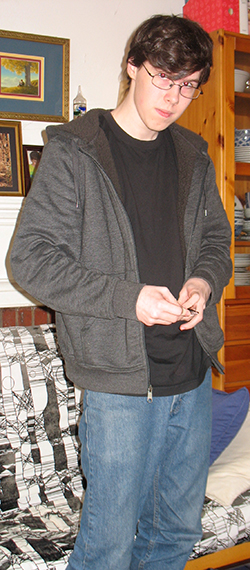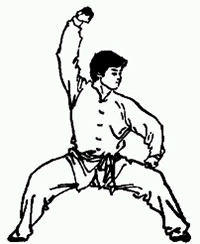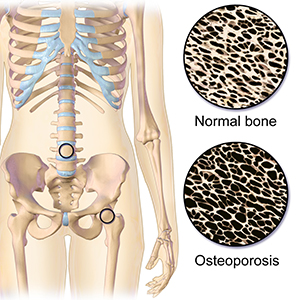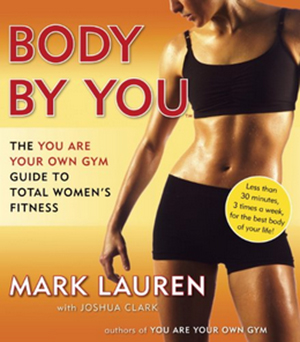
My exercise routine has centered on the gym for many years.
I love my gym. The natural wood and stone of its foyer soothes my senses. The numerous large windows on the exercise floor and at the poolside let in floods of uplifting sunlight. I feel happy and content when I am there.
Nice as the environment is, it’s what I do there that keeps me healthy.
 Sunday afternoon and Tuesday evening, I lift weights with my son.
Sunday afternoon and Tuesday evening, I lift weights with my son.
Monday, Wednesday, and Friday, I water walk, if I’m recovering from injury. If my joints are healthy, I swim.
Of course, right now my gym is closed.
I’d stopped going a week before it shut its doors, because I want to protect my husband, who is in three of the high risk categories for coronavirus.
I’ll confess that I didn’t immediately figure out what I would do to replace my gym attendance. I wasn’t yet thinking that far ahead and hadn’t envisioned being homebound for months and months.
But now that I’ve been inactive for too long, I’m determined to find a way to exercise safely.
My husband and daughter—lucky them!—can go on long walks. I wish I could go on walks, long or short. But I can’t. I love walking, and every time I try it in the amounts necessary for exercise, it trashes my right hip joint.
But never mind that. Aside from a bit of envy, I wasn’t considering walking. Instead, I had another idea.
Just before I stopped going to the gym, I attended a qigong class. I was hoping it would teach the qigong form that I learned (and subsequently forgot) roughly 12 years ago. I loved that form! Why did I ever stop doing it? Was I crazy? Who knows.
But I wanted to relearn it.
So I went to the class.
And was disappointed.
The class focused on a different form, one I didn’t like nearly as well, and one that was problematic for my body and its particular constellation of weak points.
However, I spoke with the teacher after class, and he was able to suggest which form I might be seeking. (I’d forgotten its name, as well as its content.)
Then along came coronavirus, and my attention went entirely elsewhere.
This week I’ve returned to pursuing physical fitness.
I googled the Eight Brocades of qigong, and—what do you know!—that’s the one.
So I am relearning it at home.
As I write this post, I’ve learned Supporting the Heavens, which is already doing wonders for my shoulders.
I’ve also learned Separating Heaven from Earth. I’m not seeing any immediate benefits from that one, but that’s not really the point for me. I’ll be delighted by any physical healing that comes my way, but I’m doing this as a way to exercise safely.
Well that, and because I enjoy it.
I am seeing that doing a qigong brocade as a break from writing works much better for me than just getting up to walk around the house. Strolling the house is dull, so I tend to put it off. Which means I sit for too long.
“I’ll just do one more paragraph. And one more. And just one more. Then I’ll get up.”
But I look forward to qigong, so when it is time to get up and move, I do.
Those of you who do not practice qigong yourselves might wonder what exactly are Supporting the Heavens and Separating Heaven from Earth.
Here’s the video I’m watching to relearn all this stuff:
Mimi Kuo-Deemer is very clear and has an enthusiastic and inviting demeanor, so I’m enjoying learning from her.
I remember the first time I learned the Eight Brocades, I formed a false impression from the first two brocades. “This is easy,” I thought.
Since I wasn’t then aiming for fitness with it, I wasn’t perturbed. I was learning the form simply because the teacher strongly recommended it as a pre-requisite for tai chi. That’s what I had set my sights on; I wanted to learn tai chi.
No doubt that played a role in why I dropped qigong when I discovered that my chronic hip injury would prevent me from trying tai chi for the foreseeable future.
(Okay, I was nuts. So what if I couldn’t do tai chi? Didn’t I realize I’d come to love the Eight Brocades for their own sake? Apparently not.)
But I’m digressing. Back to my point.
Supporting the Heavens is easy. But when you perform it 9 times, it grows harder. And when you perform it 24 times (I never have), I suspect it becomes quite challenging. Some qigong masters do indeed recommend 24 repetitions for each of the Eight Brocades. Start at 8 repetitions and then increase as you are able.
Just so you know: I’m currently doing 3 repetitions of each brocade as I learn it. My body tends to get injured far too easily. I plan to increase slowly and carefully.
Increasing the repetitions increases the exertion, but there’s more.
 Drawing the Bow and Big Bear Turns to Side require horse stance! Some practitioners do Clenching Fists with a Fierce Gaze in horse stance as well. Horse stance is a killer! When I was 23, I could manage it for many minutes on end. Now? Not so much.
Drawing the Bow and Big Bear Turns to Side require horse stance! Some practitioners do Clenching Fists with a Fierce Gaze in horse stance as well. Horse stance is a killer! When I was 23, I could manage it for many minutes on end. Now? Not so much.
Right near the end of my earlier qigong career (before the kidney infection that drove the final wedge between me and qigong), my teacher guided her class through a complete Eight Brocades in which we performed 5 repetitions of each brocade. Believe you me, it was a workout!
So qigong builds.
It starts out easy and just gets more challenging as you become stronger.
Gotta say, I am excited about this. I hope that qigong will become a beloved part of my day, just like my morning daylight (when I sit on the porch and journal, or write scenes from the current short story) is a cherished part of my day.
Okay, I’ve been sitting for a good hour as I write this. Time to go do some qigong!
Before I leave you, let me share another video with you. I find the previous video (above) especially useful as a learning tool. But the video below, the Eight Brocades led by a master of Shaolin Temple Europe, inspires me.
Wow! That just blows me away. I wish I had the power, control, presence, and grace that he does!
Here’s the links to the videos, if you want to view them directly on You Tube:
8 Brocades of Qigong Practice
Ba Duan Jin from Shaolin Temple Europe
And here is a list of all 8 brocades:
Supporting the Heavens
Separating Heaven and Earth
Drawing the Bow
Wise Owl Gazes Back
Big Bear Turns to Side
Touch the Bubbling Spring
Clenching the Fists with a Fierce Gaze
Bounce the Heels
For more on health, see:
How I Rehabilitated My Sleep
Sunlight as a Source of Vitamin D


